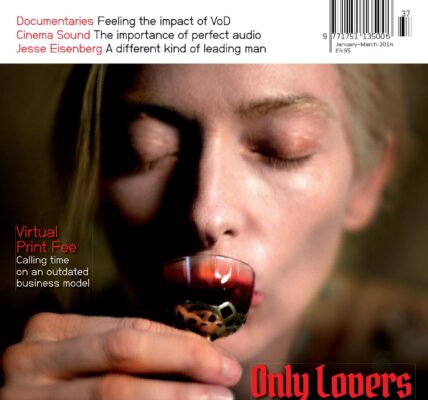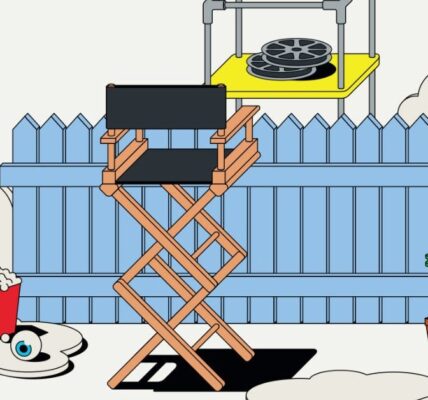No one will deny that filmmaking is very much a collaborative effort but cinematographers and screenwriters, who supply the two key ingredients that make up what are known as talking pictures, are mostly overshadowed by the more extroverted directors and actors. At film festivals and award ceremonies it is invariably the actors and directors, whose work is mostly interpretive rather that creative, that steal all the limelight, which the DoP spends hours putting in place. But not at Camerimage Film Festival in Poland.
Held in the city of Bydgoszcz, this unique festival, now in its 21st year, is a celebration of everything to do with the art of cinematography. It is a place where these unassuming men and women can step out from behind their cameras and be applauded and appreciated, as well as exchange ideas and find out all the latest developments in the technology that is vital to their work.
The festival, which is centred at the impressive Opera Nova building, opened on Saturday with a screening of Disney’s Saving Mr Banks. This was followed by the official Opening Ceremony where the juries and films taking part in the various competitions were introduced, including, for the first time, a 3D section that was drawn from a selection of films from Avatar onwards. Apart from the occasional journalist, all the juries were made of cinematographers, some of whom were competing in other sections. Production Designer Rick Carter, who has worked with the likes of Robert Zemeckis and Steven Spielberg on some of the thier most iconic movies, Was given the Award for Production Designer with Unique Visual Sensitivity. Following the ceremony was a screening of Terry Gilliam’s latest opus, The Zero Theorem, which concluded with a lengthy Q&A with Gilliam and his long-term collaborator Nicola Pecorini.
Terry Gilliam
What is particularly impressive about this festival is how much the audiences appreciate the work that is on the screen. Even the adverts (for companies such as Arri, Panavision and Kodak) were getting cheers. And when the credits roll, the polite applause becomes rapturous as the name of the cinematographer appears.
The festival has a truly packed programme that runs in five screens from 9.30 in the morning until after midnight. For many of the cinematographers this is an ideal opportunity to catch up on films they have not seen before. British-American cinematographer Sean Bobbitt said he sees more films at the festival than he does during the rest of the year. Because the festival’s remit is to showcase the best in cinematography, there is no clamour for premieres and red carpet events, instead they are great films with fantastic images followed by Q&As that have intelligent questions from people who both understand the work and want to know more about how it was achieved. Apart from all the screenings there are a large selection of workshops, masterclasses and meetings with cinematographers that serve as extended Q&As, that are well attended by the countless students at the festival.
Sunday saw the screening of Ron Howard’s Rush, which, like Asif Kapadia’s documentary Senna, transcends Formula 1 to become a human drama. Of course, Anthony Doc Mantle’s camera work is superb. Ron Howard was supposed to attend to collect the Excellence in Directing Award, but due to the fact both Howard and Dod Mantle were in the middle of a shoot, they were unable to make the journey.
Lee Daniel’s The Butler is the story of a man trying to survive through a turbulent time in US history – which isn’t to say that all history isn’t filled with turbulence. It traces the life of Cecil Gaines, from his childhood as a cotton-picking slave in the Deep South to working as a butler at the Whitehouse under seven presidents, and raising a family through the civil rights movement. Andrew Dunn’s cinematography reflects the warmth of the hero’s character despite the turmoil of the world the occasionally touches him in a personal way.
In contrast to this was Joan Churchill’s raw 16mm footage of Soldier Girls, a documentary from 1981 chronicling the basic training of young women recruits. They were subjected to the same physical and mental abuse that their male counterparts were. However, the film does not show any of the sexual abuse that was clearly rampant, as revealed in the recent documentary Invisible War. Joan said in the Q&A after the screening that they were not aware of it during the shooting, but later discovered one of the soldiers was pregnant to a married sergeant. The festival is showing a retrospective of Churchill’s work as part of the packed documentary programme, as well as a sold-out workshop.
Although the new 3D section is predictably filled with Hollywood blockbusters, one exception was Storm Surfers 3D, an Australian surfing adventure that played to a packed multiplex audience, which did not consist of just Camerimage delegates, on a Tuesday morning. It was about two Australian big wave riders, in their late 40s, who spend the winter looking for the biggest, unridden waves they can find, using satellites and scientific data. Tom Carroll, a former world champion, has been surfing nearly his whole life, but is still as stoked as ever to be in the water every day. The film didn’t really benefit from the use of 3D. Even the occasional inside the tube shots somehow lacked the sense of being there, possibly because of the sheer size of the waves. It failed to match the intimacy of George Greenough’s footage in the 1970s’ film Crystal Voyager, which was shot with a high-speed 16mm camera in a self-built, shoulder-mounted waterproof housing (a similar rig he used on John Milius’s cult classic Big Wednesday). Go-Pro’s YouTube channel also has better inside-the-tube footage.
John Turturro receiving his award
Tuesday also saw John Turturro receive the Special Award for Actor-Director before the screening of his film Fading Gigolo, which was followed by an extended Q&A in the conference room.
Meanwhile, renowned cinematographer Christopher Doyle was holding his Away With Words seminar in the Orzel Cinema. Part self-indulgent, part self-deprecating, featuring clips of Doyle having a split-screen debate with himself and his Chinese alter-ego (in English and Chinese), along with an interesting assortment of other clips form his own work and old Chinese films. The seminar was very much about the art of cinematography (or cinematography as art) rather than the craft. It proved to be incredibly popular, with people sitting in the aisles, and demand was so high it was repeated the following day.
Chris Doyle’s Away With Words seminar
It’s not been all work, and every night there has been a dinner party with lashings of food and drink for the invited guests, for an opportunity to exchange stories and meet new people. For the more adventurous (hard core) there is a nightclub that continues the celebration through most of the night. And we’re not even half way through yet.












